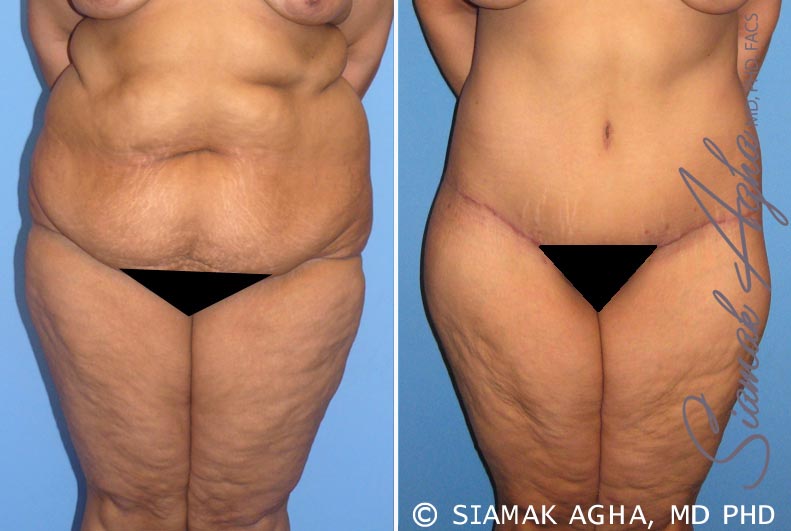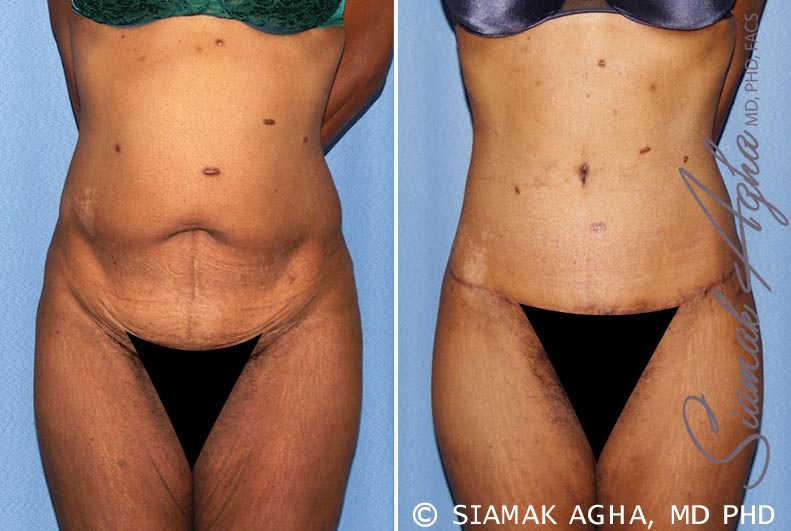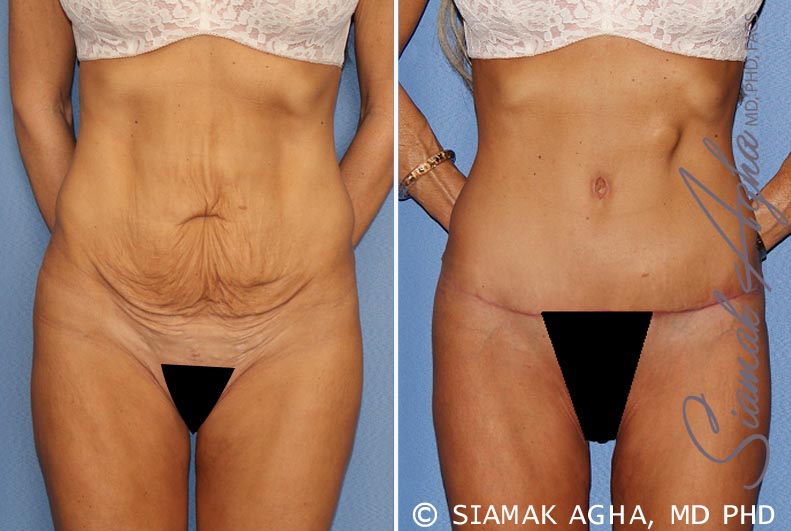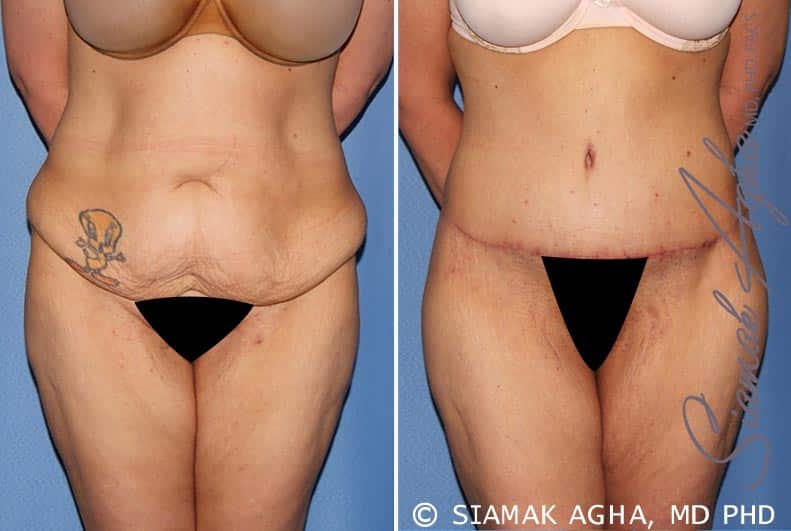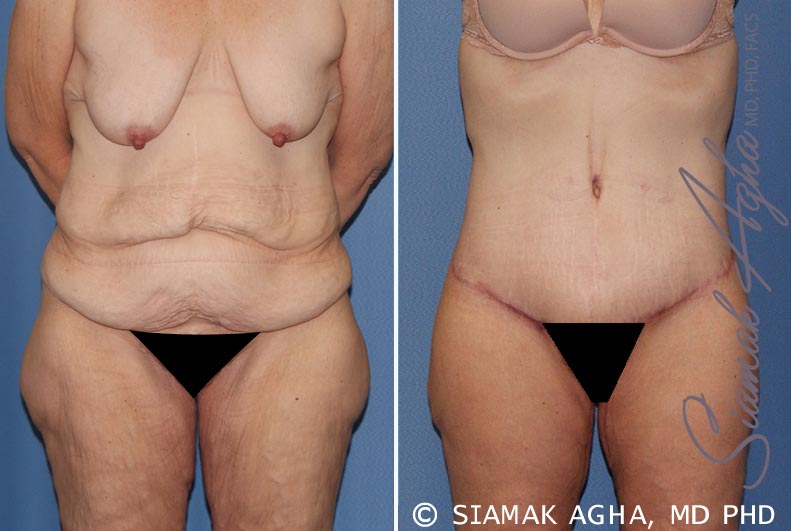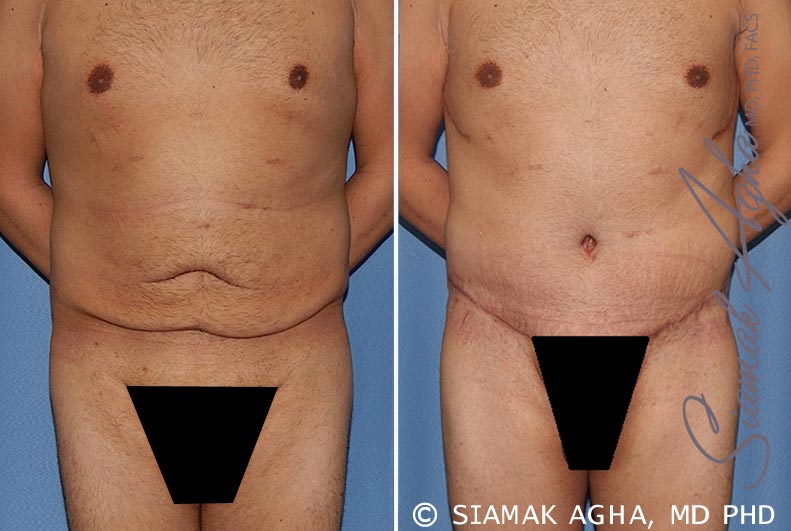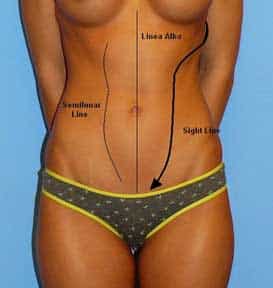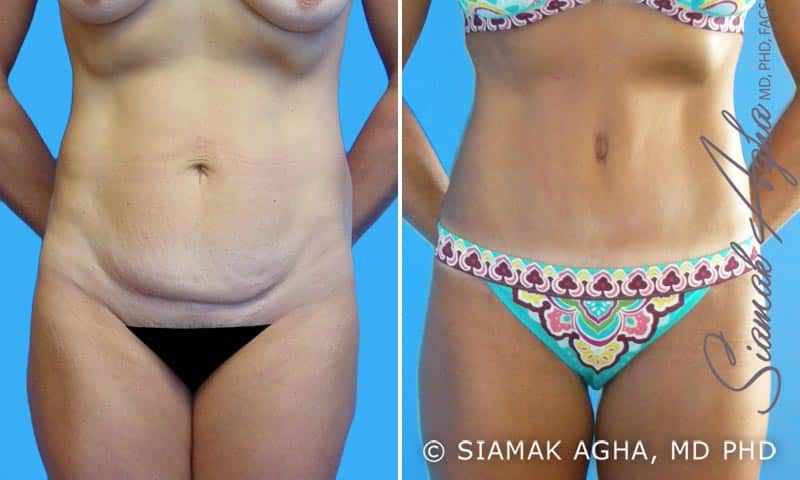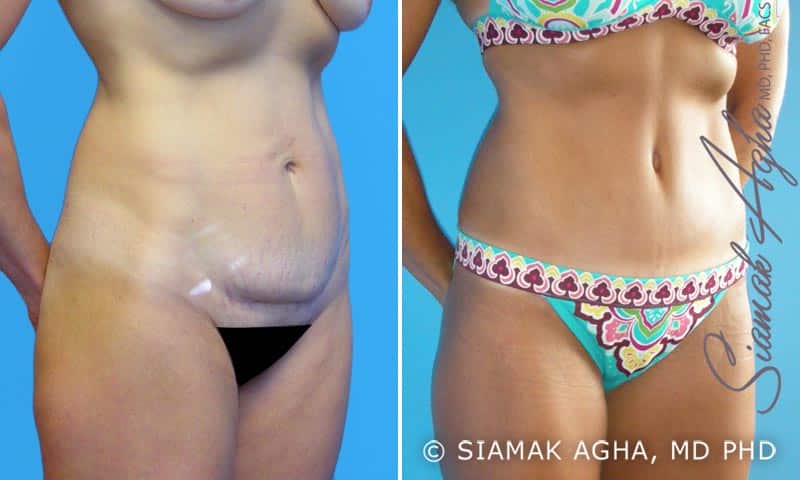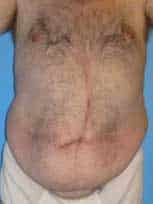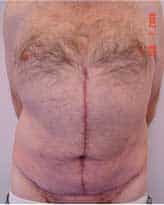ABDOMINOPLASTY
– ABDOMINAL LAXITY AFTER WEIGHT LOSS –Abdomen is the area of the body that is situated in between the rib cage above and the thighs below. The groin crease and its continuation upwards are the landmark that separate the abdomen from the thighs. The hips are defined as the projection of the pelvis and upper thigh bone on the outer thigh, and the waist is defined as the area in between the hips and the outer rib cage.
Pregnancy and/or weight gain stretch and expand the abdominal tissue in a three-dimensional manner (vertical, horizontal, and projection). Weight gain can increase the amount of fat within the abdomen (below the abdominal muscles) and around the organ systems as well as fat above the abdominal muscles (and below the abdominal skin). Unlike any other anatomical location, the intra-abdominal fat expansion affects the muscles of the abdomen by stretching them outwards. This separates the two main abdominal muscles that are responsible for the six-pack look- rectus abdominus muscles. These muscles form two vertical bands down the abdomen that are conjoined at the midline by connective tissue.
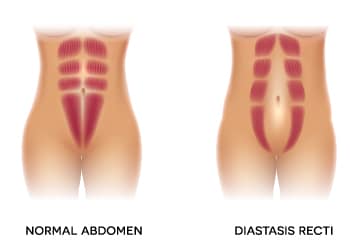
Also, the abdominal skin will be stretched beyond its elastic capability and result in breakage of the deeper dermal layer of skin.
In many cases, after significant weight loss, the stretched out skin is unable to completely spring back and contract. The degree of deeper skin damage (dermal tear), visible as stretch marks, dictates the ability of the skin to retract to its initial form. Thus, the abdominal skin and tissue hang loosely while the abdominal wall musculature bulges out. Often there is surplus skin and underlying fat in both the upper and lower abdomen. However, the most significant changes are seen below the umbilicus, where excess tissue hangs, over the groin area to a varying degree, as a pannus.
Apart from bulging of the abdomen, the waist skin is often loose with remaining excess fatty tissue. In most patients the lower abdominal pannus can be seen merging with the lower back hip roll on the sides.
As a result of the changes in the muscle, fat, and skin of the abdomen, an abdominoplasty or a tummy tuck is probably the most valuable procedure for a weight loss patient. Abdominoplasty is a surgical procedure that removes excess abdominal skin and fat from the abdomen and tightens the underlying muscles of the abdominal wall.



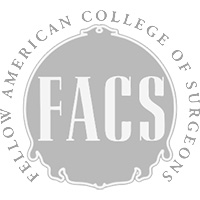

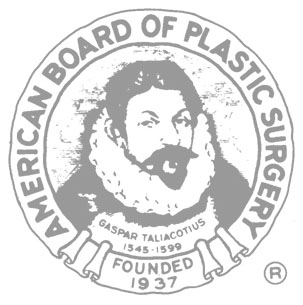
Abdominoplasty For Weight Loss Patients
Types of Abdominoplasty Or Tummy Tucks Offered by Dr. Agha
There are many types of abdominoplasties that Dr. Agha performs routinely. In addition to these, Dr. Agha has developed his own signature abdominoplasty that he calls “high-definition tummy tuck” since it refines the abdominal contour in a 3-dimensional form.

Abdominoplasty for Weight Loss Patients
As has been mentioned above, weight loss patients often have sagging skin of the upper and lower body. The degree of the skin laxity varies from one patient to another and some may opt for a less extensive body contouring procedures.
However, most weight loss patients benefit from an extended tummy tuck or circumferential abdominoplasty or a lower body lift. When a patient does not want a circumferential incision, an extended tummy tuck uses a customized longer tummy tuck incision to not only remove lower abdominal skin excess, but also some of the waist tissue on the sides. For other patients who want a circumferential tummy tuck, a 360-degree incision on the lower abdomen and back is used to remove excess abdominal tissue, waist tissue, and lower back/upper buttocks hip roll. In both of these tummy tuck surgeries, the vertical incision of Fleur-de-lis is reserved for those rare patients who have lost significant abdominal girth and have a wide abdominal pannus.
Is Circumferential Abdominoplasty the Same as a Lower Body Lift?
Although most plastic surgeons use the terms circumferential abdominoplasty, belt lipectomy, and a lower body lift interchangeably, Dr. Agha believe that the lower body lift is a more comprehensive surgery and should not be mistaken for a circumferential abdominoplasty.
Circumferential tummy tuck and lower body lift differ in the amount of work done. Both procedures utilize the same 360 degrees incision, but in our practice, a high-definition lower body lift includes:
1) Tummy tuck to remove the excess abdominal tissue
2) Monsplasty- correction of pubic laxity and sag
3) Removal of the excess tissue at the waist
4) Outer thigh lift
5) Anterior thigh lift (thigh front lift)
6) Removal of the lower back excess skin together with a buttock lift
7) Liposuction of lower back, love-handles, and waist. In Dr. Agha’s practice, lower body lift is typically performed in association with liposuction to bring about a better body contour and shape. Dr. Agha works to completely re-contour the body shape, enhancing and showcasing the patient’s weight loss success with a sculpted and tightened body.
Thus, a high-definition lower body lift offers torso and thigh correction while the circumferential abdominoplasty is a torso correction and does little for the thighs.
To learn more about recovery after a tummy tuck, please visit our tummy tuck pages here.

